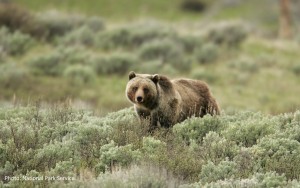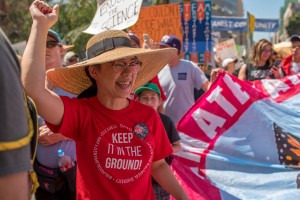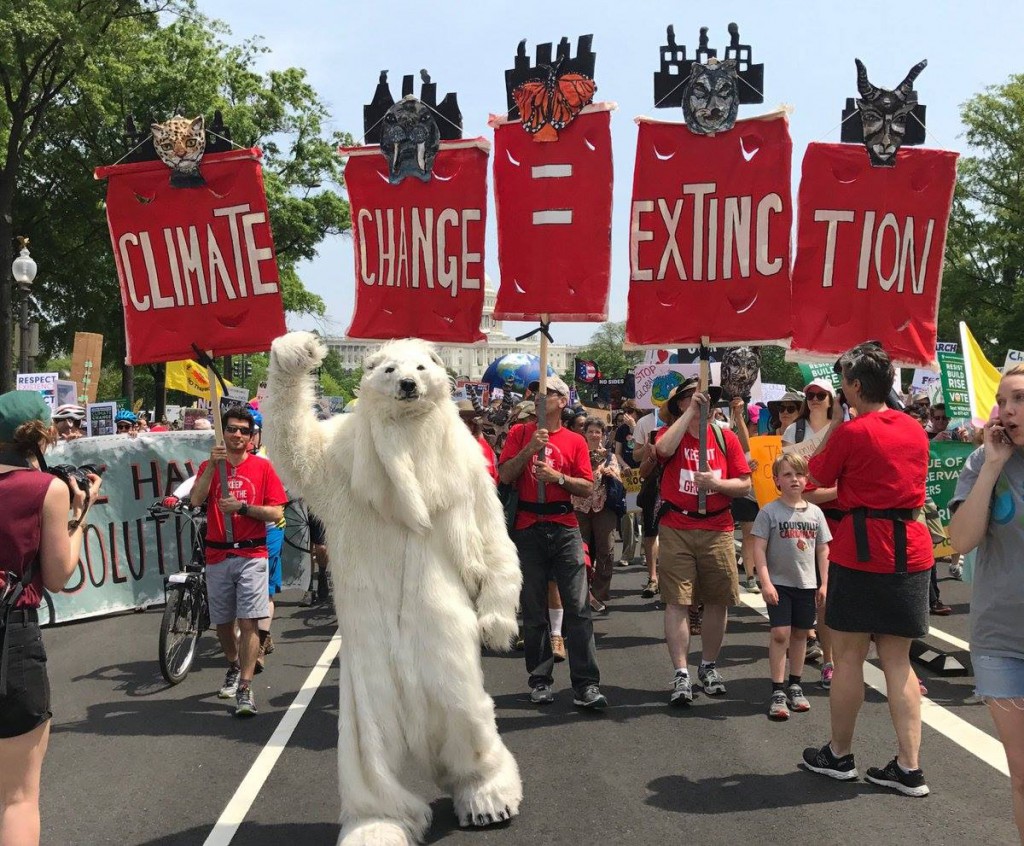
Beneficiary guest blog— Center for Biological Diversity: “Mobilizing for the Wild”
By AdministratorThere’s nothing quite like harnessing the power of the people for good.
Over the past couple of years, I’ve been proud to be part of a movement that’s re-energizing grassroots activism aimed at protecting endangered wildlife and the most important places where they live.
The Center for Biological Diversity is often rightly noted for its legal and scientific work over the past 30 years. But at the core of the organization is an activist’s heart, a belief that saving wildlife and wild places is a long journey where success will be born of people standing up and standing together — facing down the powerful so that future generations will have a planet where the wild is still alive.
That’s been our driving mission, especially during the Trump administration’s unprecedented attacks on wildlife. In response we’ve dramatically ramped up our work to mobilize the public — building a network of thousands of volunteers ready to answer the call.
 In the summer of 2018, we helped organize people around the country after the Trump administration ended federal protection for grizzly bears that live in and around Yellowstone National Park. Trump’s move paved the way for Wyoming and Idaho to approve trophy-hunting seasons authorizing more than 20 bears to be shot and killed, including 13 females. We couldn’t let that stand. So while the Center launched a legal challenge and we put up billboards, our organizing team tapped into a coast-to-coast network of volunteers ready to take action.
In the summer of 2018, we helped organize people around the country after the Trump administration ended federal protection for grizzly bears that live in and around Yellowstone National Park. Trump’s move paved the way for Wyoming and Idaho to approve trophy-hunting seasons authorizing more than 20 bears to be shot and killed, including 13 females. We couldn’t let that stand. So while the Center launched a legal challenge and we put up billboards, our organizing team tapped into a coast-to-coast network of volunteers ready to take action.
Our volunteers held more than 40 “Brews for Bears” events at bars, coffee shops and breweries to learn more and write postcards to the Trump administration. It was heartwarming, topped only by a judge’s decision in September 2018 that reinstated grizzly protection and nullified any plans for trophy hunts.
 But there wasn’t much time to rest. A few months later, the Trump administration announced plans to end Endangered Species Act protection for nearly every wolf in the lower 48 states. His proposal would pull the plug on 40 years of wolf recovery work and take us back to the days when these fascinating animals were persecuted to the brink of extinction.
But there wasn’t much time to rest. A few months later, the Trump administration announced plans to end Endangered Species Act protection for nearly every wolf in the lower 48 states. His proposal would pull the plug on 40 years of wolf recovery work and take us back to the days when these fascinating animals were persecuted to the brink of extinction.
Once again we turned to our growing network of volunteer activists in a campaign we named “Call of the Wild.” This time we took it to another level.
We held calls, empowered volunteers, conducted trainings, set up mentorship programs, rallied in wolf masks, hosted presentations, phoned governors, worked with students, made art… the list goes on and on. It was inspiring to see so many people motivated and working so hard for the cause. Yes, we steered them in the right direction and supported them along the way, but it was truly a people-powered movement that went beyond anything we could’ve done on our own.
And the results were staggering.
Over the course of several months, more than 1,000 volunteers fanned out across the country and collected some 53,000 pro-wolf comments at farmers markets, dog parks, street fairs and other local events. By the summer of 2019, we and our other allies in the environmental movement turned in more than 1.8 million comments calling on the Trump administration to retain wolf protections. It was the largest number of comments ever submitted in the 45-year history of the Endangered Species Act.
But the other shoe dropped less than a month later, when the Trump administration rolled out a series of disastrous new rules crippling implementation of the Endangered Species Act. This time it wasn’t just wolves or bears. These rules cast a long, dark shadow over hundreds of species protected by the Act — and even those in line for protection.
We took a deep breath and dove in once again. Our “Act for Endangered Species” campaign was up in running within a few weeks. More than 400 people — volunteers around the country — joined our first campaign call, fired up and ready to go. The next day they were flooding Congress with phone calls and then starting to recruit more people into the movement. We notched our first key victory not long afterward with a bill introduced in the U.S. House of Representatives to roll back the Trump administration’s attacks on the Endangered Species Act.
This fight to save the Act — and the wolves, bears and other species it protects — will be a long one. It may last months or even years — honestly, that’s hard to say.
But what I know for certain is that we’ve tapped into everyday people’s incredible love for the wild and for wildlife. In the long run, love is stronger than fear. And when we channel our love for the wild into activism, when we mobilize together, support each other, learn as we go and never stop fighting, we achieve something that’s priceless in times of darkness: hope.
Valerie Love is deputy director of the organizing department at the Center for Biological Diversity.



